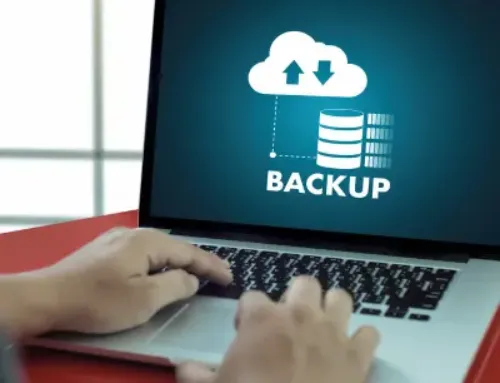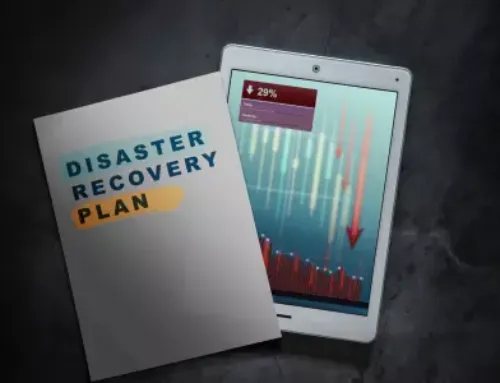Automated Backups vs. Manual: Which Is Better for Small Businesses?
Backups Aren’t Optional
For small businesses, losing critical data can mean more than just a temporary inconvenience; it can bring operations to a grinding halt. Whether it’s customer records, financial files, or inventory details, a single hardware failure, ransomware attack, or accidental deletion can set you back days, weeks, or even shut the doors for good.
That’s why backups are essential. They’re your safety net, your insurance policy against the unexpected. But there’s more than one way to handle them, and the method you choose can make the difference between a quick recovery and a costly disaster.
The two most common approaches? Manual backups, where you (or a staff member) initiate the process, and automated backups, where software takes care of it for you in the background. Both have their place, but which is better for small businesses?
Let’s break down the pros and cons of each so you can make the right call for your business.
What Are Manual Backups?
A manual backup is exactly what it sounds like; you or someone on your team actively saves a copy of your data to a storage device or service. This could mean copying files to an external hard drive, burning them to a DVD, uploading them to a cloud folder, or even dragging and dropping them onto a USB stick.
Advantages of Manual Backups
Drawbacks of Manual Backups
Manual backups can work, if you’re disciplined about doing them regularly. But for most small businesses, consistency is the hardest part.
What Are Automated Backups?
Automated backups use software to regularly and automatically copy your data to a secure location, without requiring you or your team to take action each time. Once it’s set up, the process runs in the background, whether it’s saving to a local server, a cloud service, or both.
Advantages of Automated Backups
Drawbacks of Automated Backups
For most small businesses, automation removes the biggest barrier to effective backups: actually remembering to do them.
Why Automation Usually Wins for Small Businesses
When it comes to backups, the best system is the one you can count on every time. For most small businesses, that’s automation.
Here’s why automated backups often come out ahead:
1. Reliability Without Extra Effort
Manual backups depend on someone remembering to run them. Automated backups happen on schedule: daily, hourly, or even in real time, without interrupting your workflow.
2. Better Protection Against Data Loss
Because automated systems run regularly, you’re less likely to lose large amounts of data after a failure. At most, you’ll lose a few hours instead of days or weeks.
3. Offsite and Encrypted Storage
Most automated solutions include cloud backups, which are stored securely away from your business. That means your data is safe even if your office experiences theft, fire, or flooding.
4. Faster Recovery
Automated systems often make restoring files as simple as selecting a date and clicking “restore.” In a crisis, that speed can make the difference between a quick recovery and extended downtime.
5. Scales as You Grow
Whether you add more employees, devices, or locations, automation expands without adding more to your to-do list.
For small businesses without dedicated IT staff, automation turns backups from a task you should do into a protection you can rely on.
The Hybrid Approach: Best of Both Worlds
While automation covers the day-to-day, there’s still value in having an extra layer of protection. That’s where a hybrid approach comes in, combining automated backups with occasional manual ones.
How It Works
- Automated Daily (or Hourly) Backups
Your primary safety net, capturing changes in real time or at set intervals and storing them securely offsite. - Manual “Snapshot” Backups
Once a month or quarter, create a manual backup stored offline on an external drive or other secure medium. This adds a layer of protection against rare events like cloud account breaches or ransomware that encrypts connected backups.
Why It’s Smart
- Redundancy – If one backup method fails, the other is there to fill the gap.
- Offline Protection – Manual backups kept completely offline are immune to most online threats.
- Peace of Mind – Knowing you have two independent systems makes recovery more certain.
For many small businesses, this approach provides the consistency of automation with the security of having a physical backup under their own control.
How to Choose the Right Backup Plan
The best backup strategy isn’t one-size-fits-all; it depends on your business’s data, workflow, and tolerance for downtime.
Here’s what to consider when deciding between manual, automated, or a hybrid approach:
- 1How Often Your Data Changes
If you update customer records, process transactions, or create new files daily, you need frequent backups, something automation handles best. - 2The Type of Data You Store
Financial records, customer information, and proprietary work often have compliance or legal requirements for retention and protection. Your backup plan should meet those standards. - 3How Quickly You Need to Recover
Ask yourself: if everything disappeared right now, how long could you afford to be down? If the answer is “not long,” you need an automated system with quick restore options. - 4Your Budget vs. the Cost of Downtime
Automated solutions cost more upfront than manual backups, but losing days, or weeks, of productivity costs much more. - 5Compliance and Industry Requirements
Some industries require encrypted, offsite, or redundant backups. Make sure your plan checks every compliance box to avoid fines or legal issues.
Data loss rarely gives you a warning. One unexpected hard drive failure, one ransomware attack, or one accidental file deletion can erase days, months, or years of work in seconds.
The best time to set up a reliable backup plan was yesterday. The second-best time is right now.
Whether you choose automated, manual, or a hybrid approach, the key is consistency, and knowing you can recover when it matters most.



